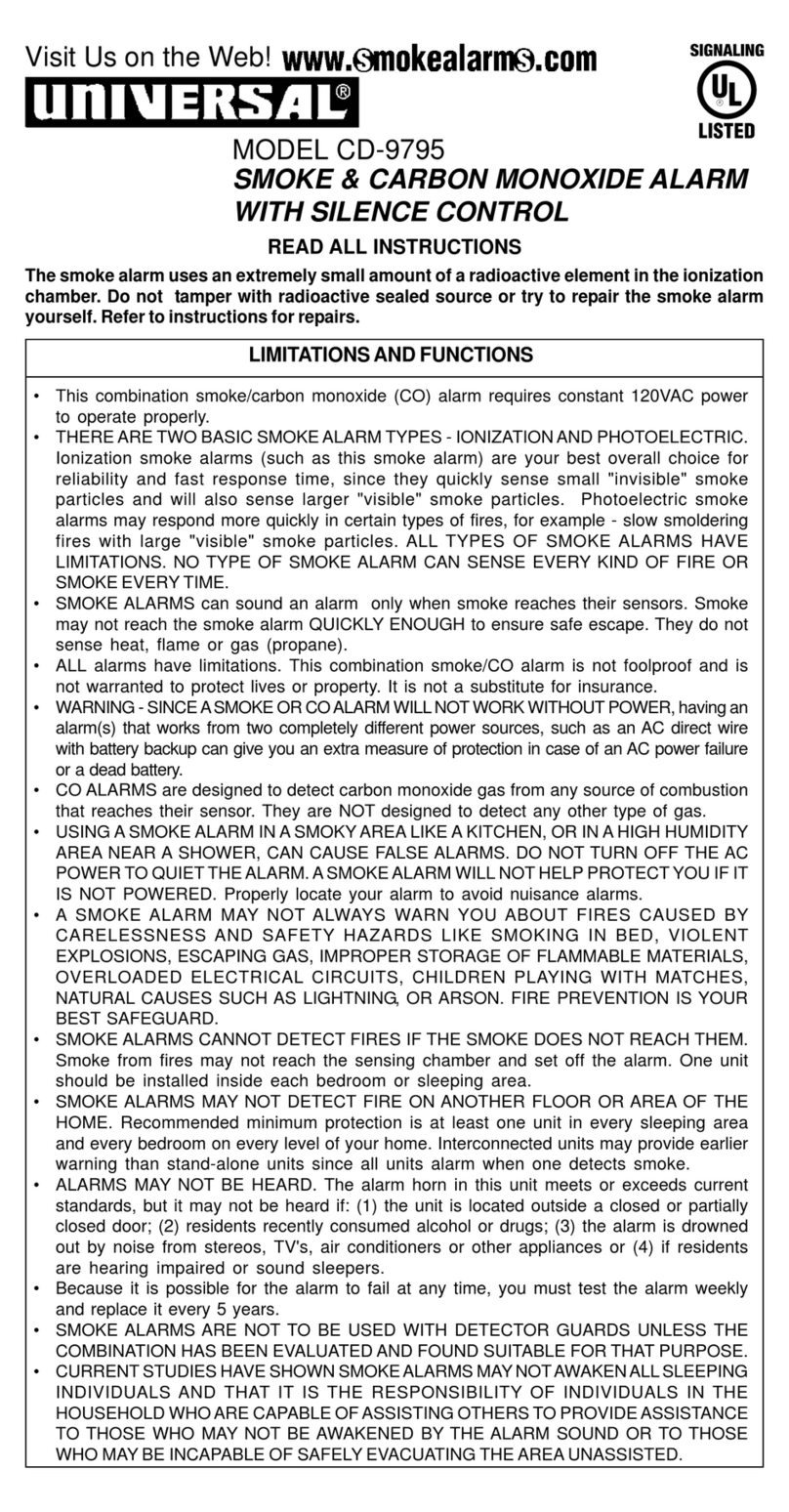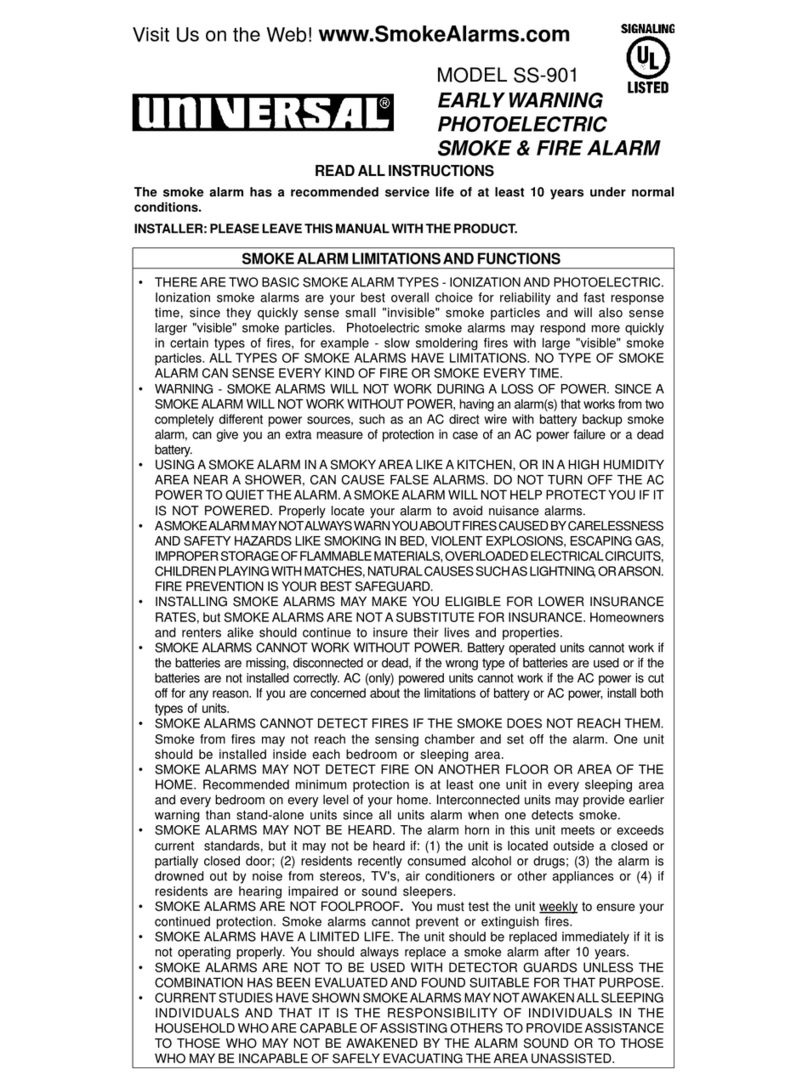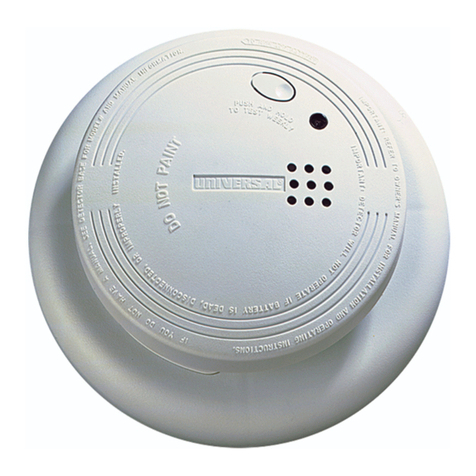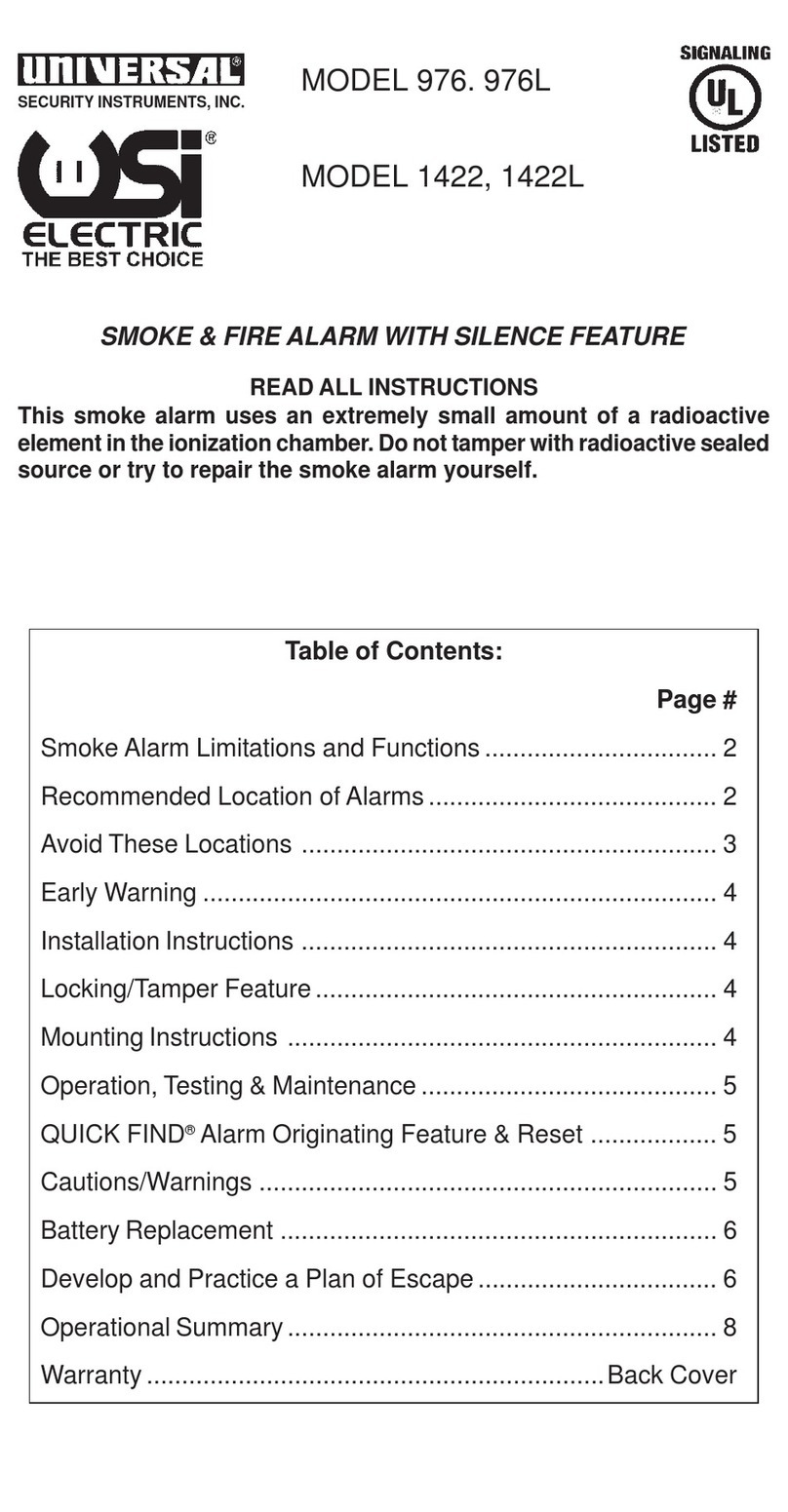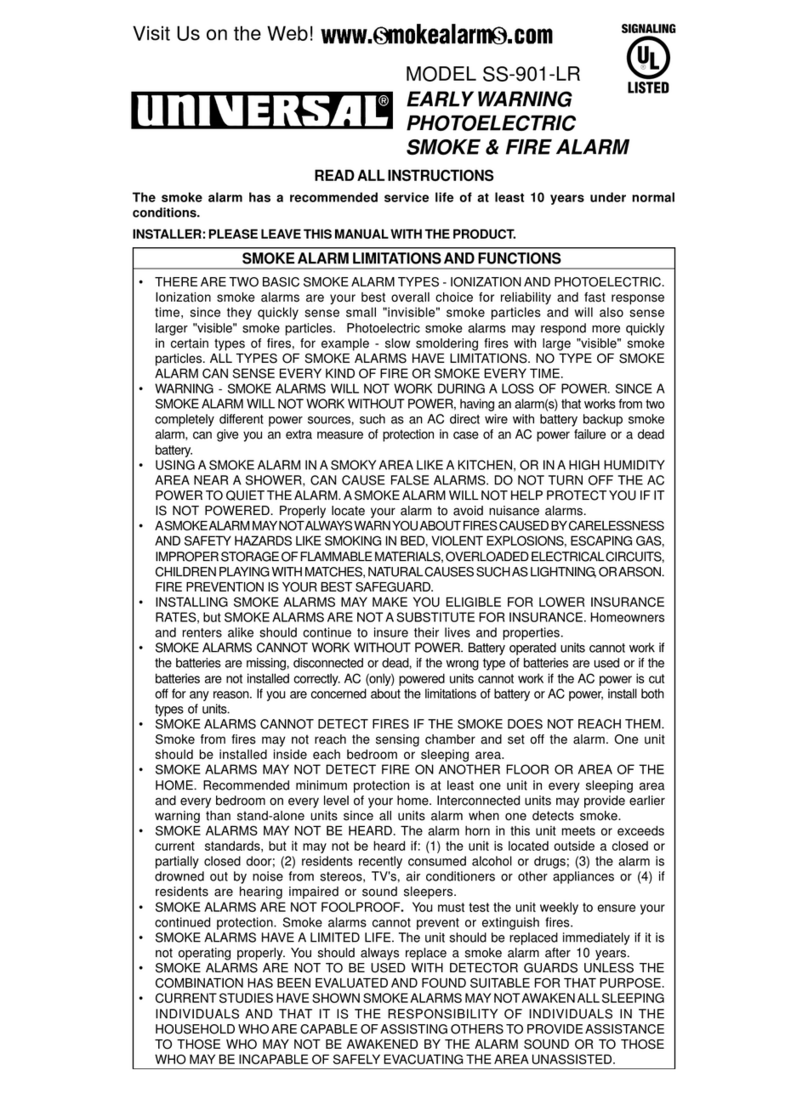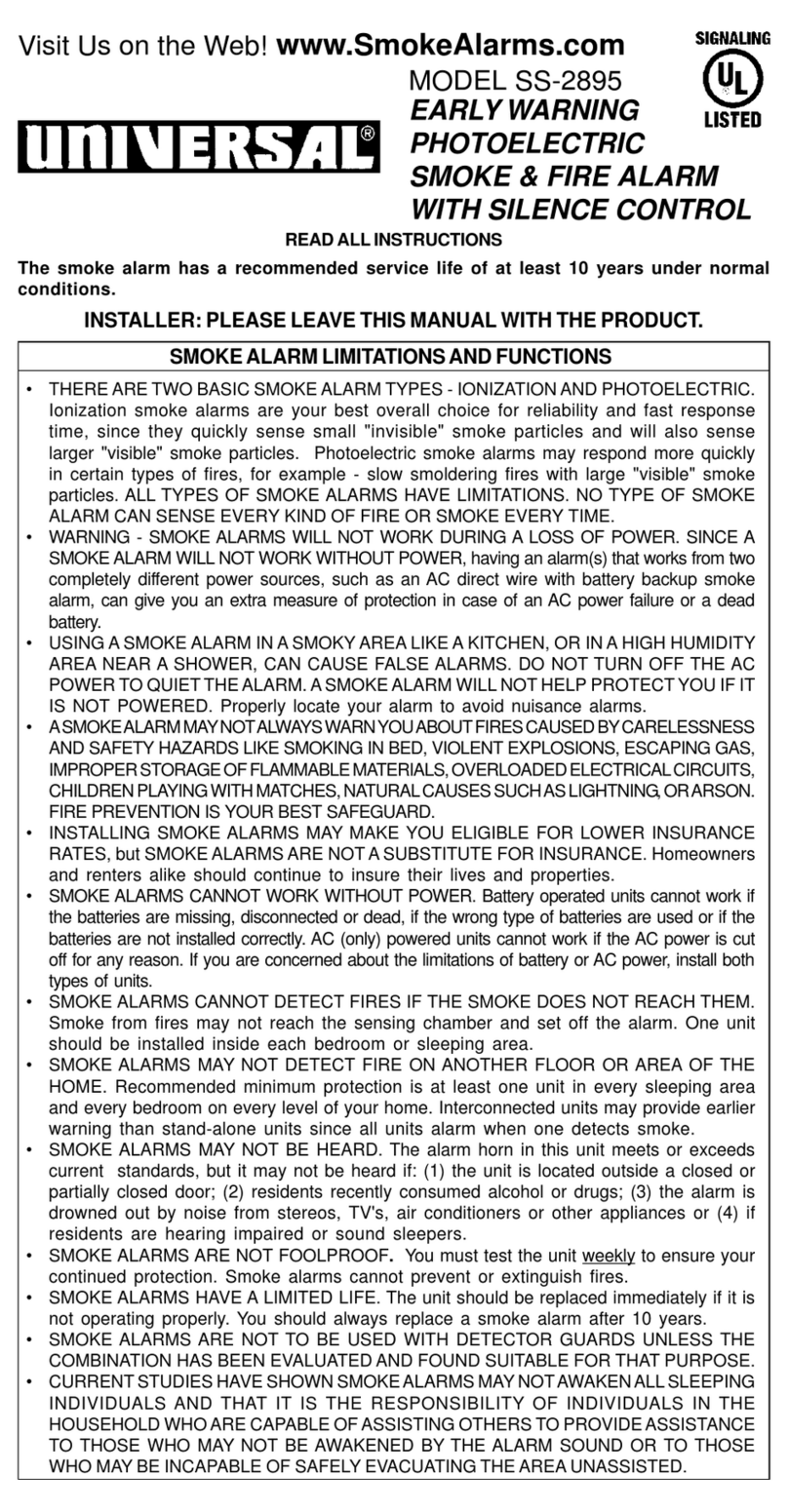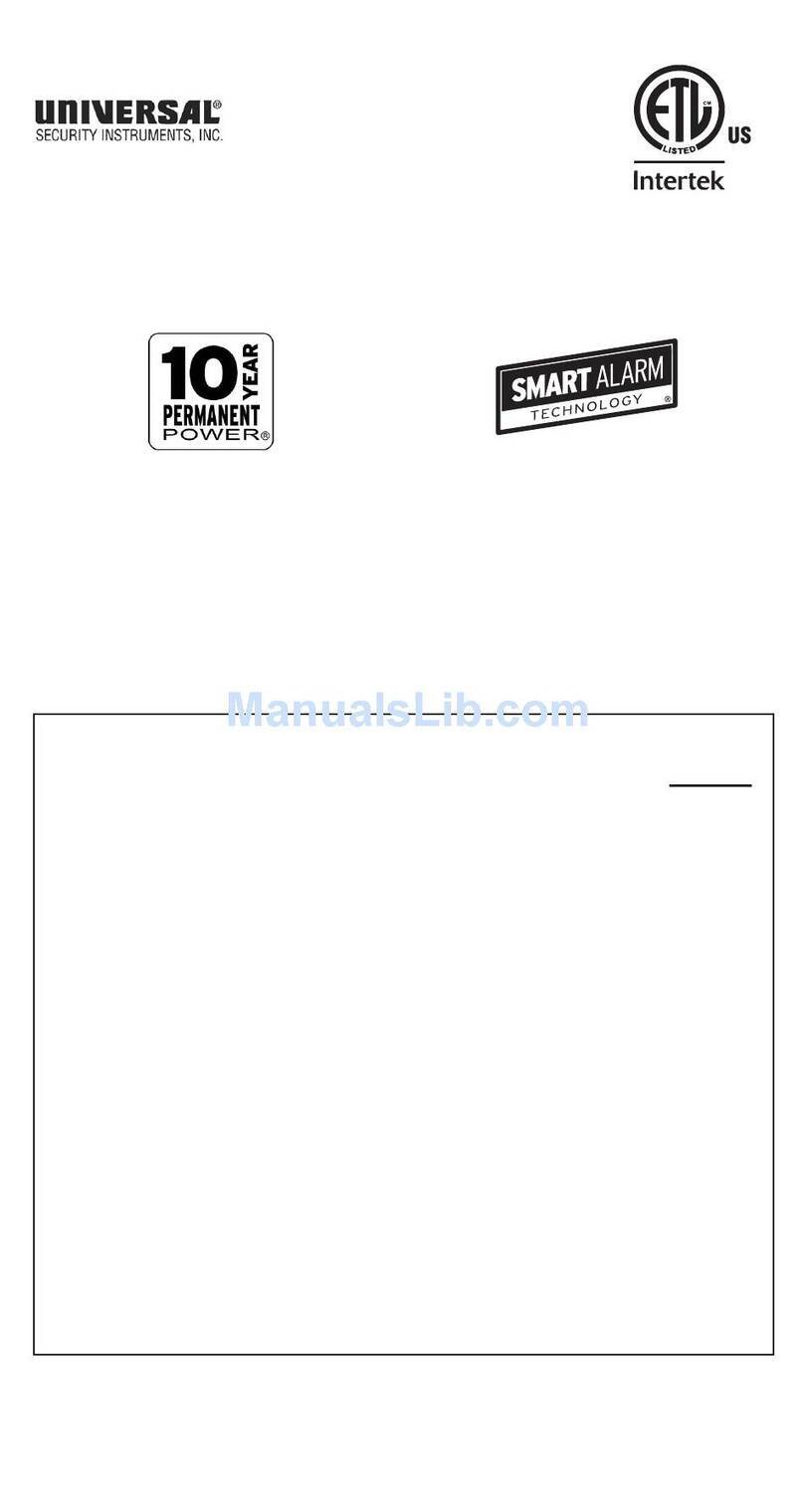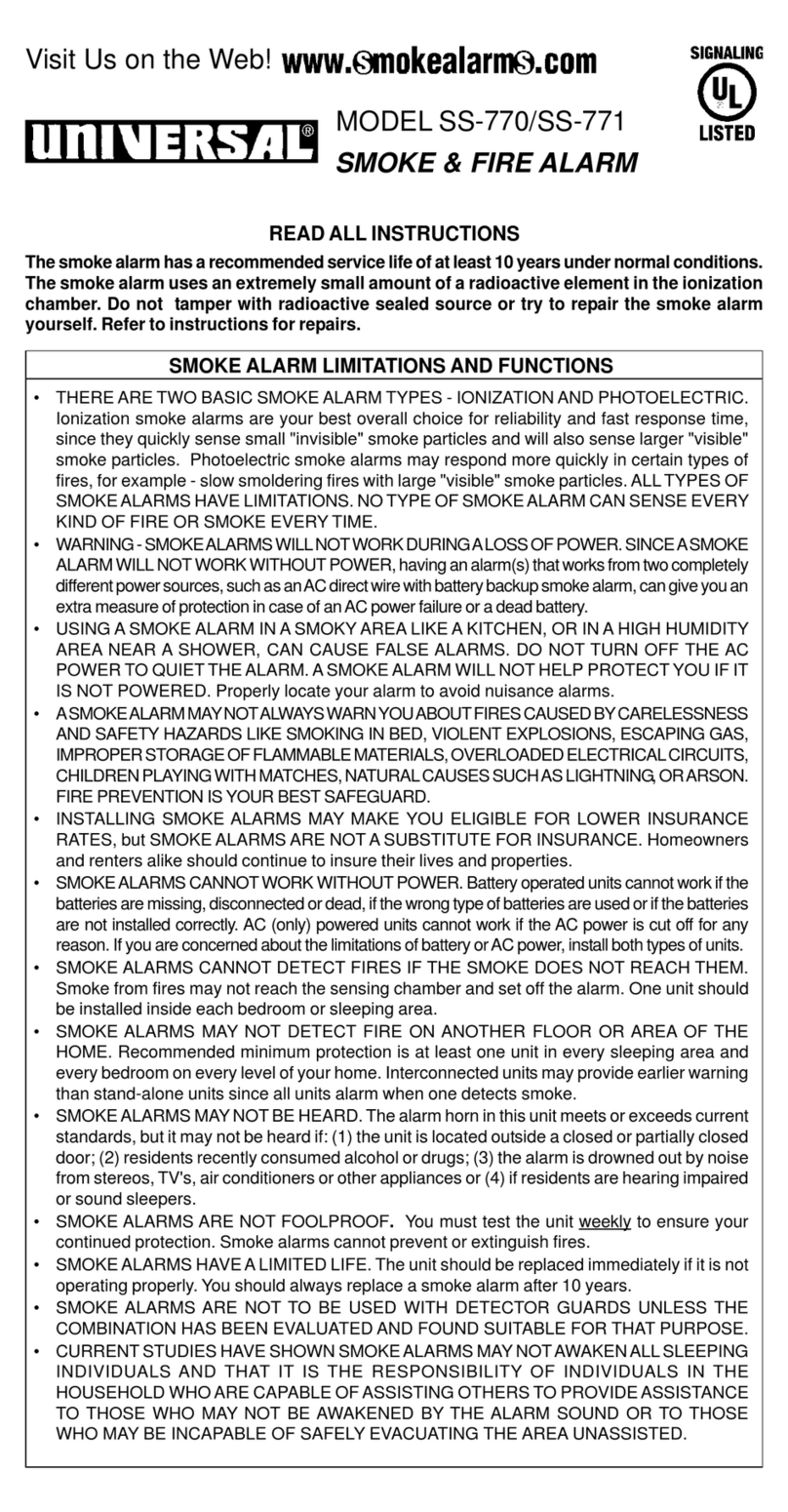READ ALL INSTRUCTIONS
Thesmokealarmhasarecommendedservicelifeofatleast10yearsundernormalconditions.
The smoke alarm uses an extremely small amount of a radioactive element in the ionization
chamber. Do not tamper with radioactive sealed source or try to repair the smoke alarm
yourself. Refer to instructions for repairs.
MODEL SS-785/SS-790
EARLYWARNING
SMOKE & FIRE ALARM
SMOKEALARM LIMITATIONSAND FUNCTIONS
• THEREARETWO BASIC SMOKEALARM TYPES - IONIZATIONAND PHOTOELECTRIC.
Ionization smoke alarms are your best overall choice for reliability and fast response
time, since they quickly sense small "invisible" smoke particles and will also sense
larger "visible" smoke particles. Photoelectric smoke alarms may respond more quickly
in certain types of fires, for example - slow smoldering fires with large "visible" smoke
particles. ALL TYPES OF SMOKE ALARMS HAVE LIMITATIONS. NO TYPE OF SMOKE
ALARM CAN SENSE EVERY KIND OF FIRE OR SMOKE EVERY TIME.
• WARNING - SMOKE ALARMS WILL NOT WORK DURING A LOSS OF POWER. SINCE A
SMOKE ALARM WILL NOT WORK WITHOUT POWER, having an alarm(s) that works from two
completely different power sources, such as an AC direct wire with battery backup smoke
alarm, can give you an extra measure of protection in case of an AC power failure or a dead
battery.
• USINGASMOKE ALARM INA SMOKY AREA LIKEAKITCHEN, OR INA HIGH HUMIDITY
AREA NEAR A SHOWER, CAN CAUSE FALSE ALARMS. DO NOT TURN OFF THE AC
POWER TO QUIETTHEALARM.ASMOKEALARM WILL NOTHELP PROTECT YOU IF IT
IS NOT POWERED. Properly locate your alarm to avoid nuisance alarms.
• ASMOKEALARMMAYNOTALWAYSWARNYOUABOUTFIRESCAUSEDBYCARELESSNESS
AND SAFETY HAZARDS LIKE SMOKING IN BED, VIOLENT EXPLOSIONS, ESCAPING GAS,
IMPROPERSTORAGEOFFLAMMABLEMATERIALS,OVERLOADEDELECTRICALCIRCUITS,
CHILDRENPLAYINGWITHMATCHES,NATURALCAUSESSUCHASLIGHTNING,ORARSON.
FIRE PREVENTION IS YOUR BEST SAFEGUARD.
• INSTALLING SMOKE ALARMS MAY MAKE YOU ELIGIBLE FOR LOWER INSURANCE
RATES, but SMOKEALARMSARE NOTASUBSTITUTE FOR INSURANCE. Homeowners
and renters alike should continue to insure their lives and properties.
• SMOKE ALARMS CANNOT WORK WITHOUT POWER. Battery operated units cannot work if
the batteries are missing, disconnected or dead, if the wrong type of batteries are used or if the
batteries are not installed correctly. AC (only) powered units cannot work if the AC power is cut
off for any reason. If you are concerned about the limitations of battery or AC power, install both
types of units.
• SMOKE ALARMS CANNOT DETECT FIRES IF THE SMOKE DOES NOT REACH THEM.
Smoke from fires may not reach the sensing chamber and set off the alarm. One unit
should be installed inside each bedroom or sleeping area.
• SMOKE ALARMS MAY NOT DETECT FIRE ON ANOTHER FLOOR OR AREA OF THE
HOME. Recommended minimum protection is at least one unit in every sleeping area
and every bedroom on every level of your home. Interconnected units may provide earlier
warning than stand-alone units since all units alarm when one detects smoke.
• SMOKE ALARMS MAY NOT BE HEARD. The alarm horn in this unit meets or exceeds
current standards, but it may not be heard if: (1) the unit is located outside a closed or
partially closed door; (2) residents recently consumed alcohol or drugs; (3) the alarm is
drowned out by noise from stereos, TV's, air conditioners or other appliances or (4) if
residents are hearing impaired or sound sleepers.
• SMOKE ALARMS ARE NOT FOOLPROOF. You must test the unit weekly to ensure your
continued protection. Smoke alarms cannot prevent or extinguish fires.
• SMOKE ALARMS HAVE A LIMITED LIFE. The unit should be replaced immediately if it is
not operating properly. You should always replace a smoke alarm after 10 years.
• SMOKE ALARMS ARE NOT TO BE USED WITH DETECTOR GUARDS UNLESS THE
COMBINATION HAS BEEN EVALUATED AND FOUND SUITABLE FOR THAT PURPOSE.
• CURRENTSTUDIES HAVE SHOWN SMOKEALARMS MAYNOTAWAKENALLSLEEPING
INDIVIDUALS AND THAT IT IS THE RESPONSIBILITY OF INDIVIDUALS IN THE
HOUSEHOLD WHOARE CAPABLE OF ASSISTING OTHERSTO PROVIDEASSISTANCE
TO THOSE WHO MAY NOT BE AWAKENED BY THE ALARM SOUND OR TO THOSE
WHO MAY BE INCAPABLE OF SAFELY EVACUATING THE AREA UNASSISTED.
Visit Us on the Web! www.SmokeAlarms.com
